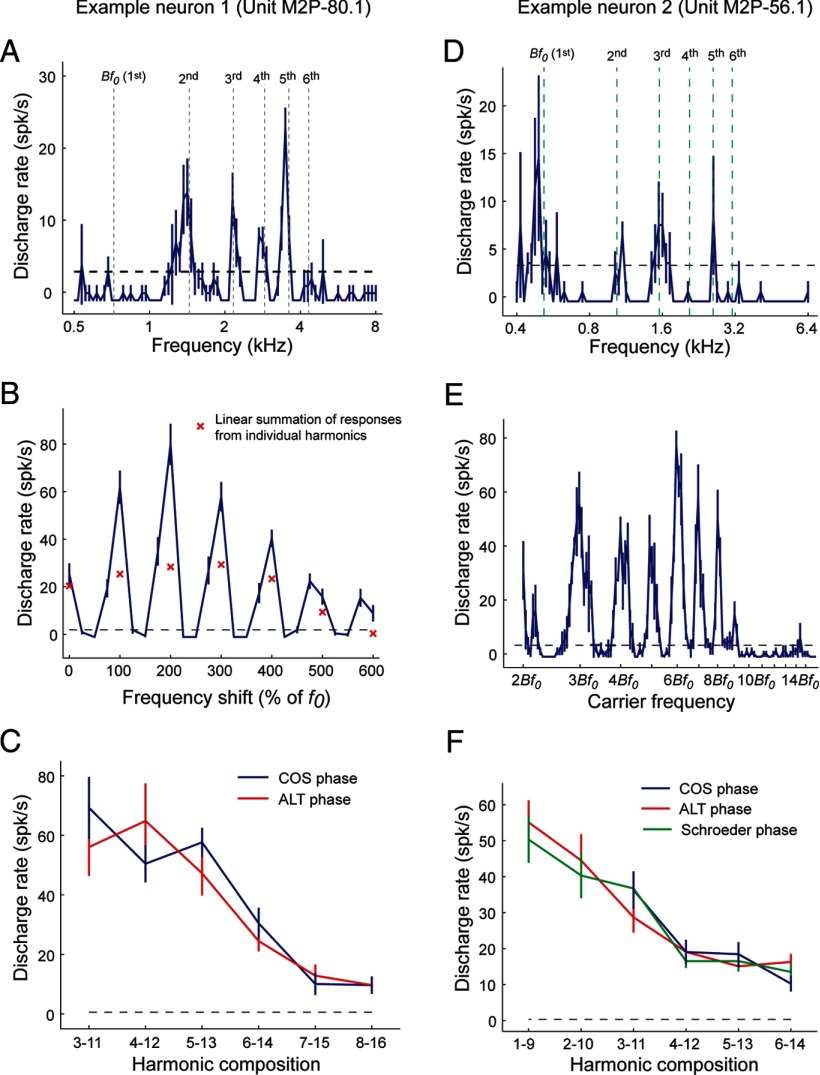Figure 7.
Multipeaked neuron examples. A–C, This neuron (unit M2P-80.1) was not classified as a pitch-selective neuron because it did not have the same tuning for pure tones and MF harmonic complex sounds. However, it did respond to pure tones at harmonics of its Bf0 at 720 Hz. A, Multipeaked tuning to pure tones. Vertical dashed lines indicate the Bf0 (720 Hz) and corresponding higher harmonics (2–6). B, Sensitivity to pitch shift. Stimuli were three-component harmonic/inharmonic complex tones (1–3, f0 = 720 Hz). Responses shown for the complex tone (curve) are greater than the summation of responses to each component played individually (× symbols). Responses to harmonic shifts (100% of f0) are greater than to inharmonic or odd-harmonic shifts. The dashed lines in A and B indicate the minimum firing rate criterion for a significant response (2 SDs above the mean spontaneous rate). C, Similar responses were observed for COS and ALT harmonic complex tones in several harmonic compositions, indicating no PSI for this neuron. D–F, Responses from another multipeaked neuron (unit M2P-56.1). D, Frequency tuning obtained by pure tone stimuli. Vertical dashed lines indicate frequencies that are harmonically related to the Bf0 (518 Hz) estimated using sAM tones. E, Responses to sAM tones with a modulation frequency equal to the Bf0 (518 Hz), varying in carrier frequency (labeled relative to the Bf0). The neuron showed preferences for carrier frequencies that are integer multiples of the Bf0. The dashed lines in D and E indicate the minimum firing rate criterion for a significant response (2 SDs above the mean spontaneous rate). F, Similar responses are observed for harmonic complex tones in COS, ALT, and Schroeder phase. No phase sensitivity is observed in this neuron.

